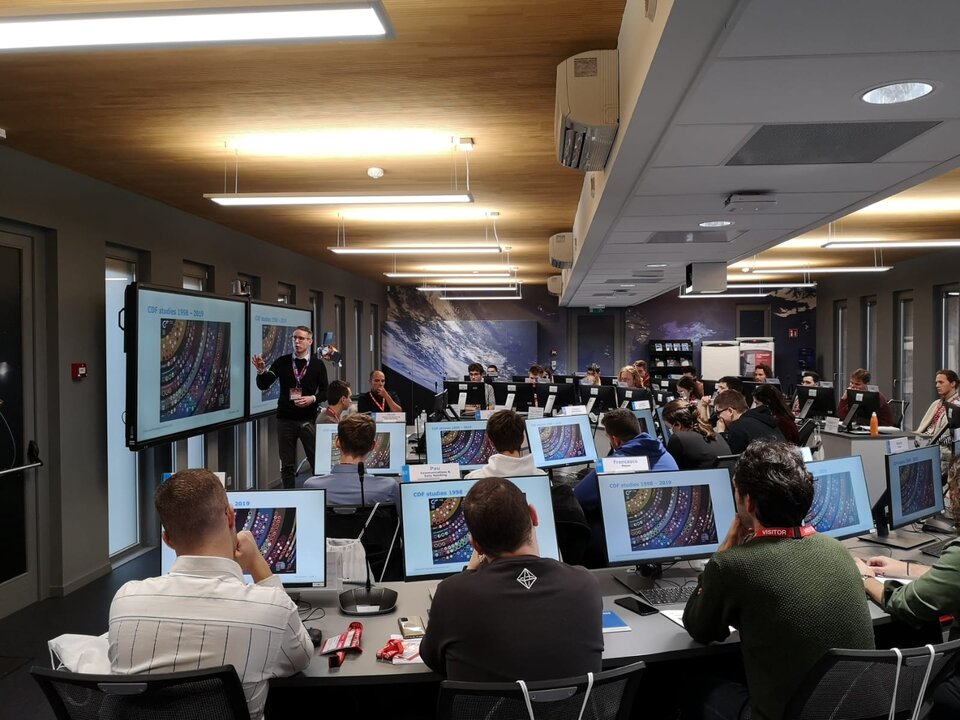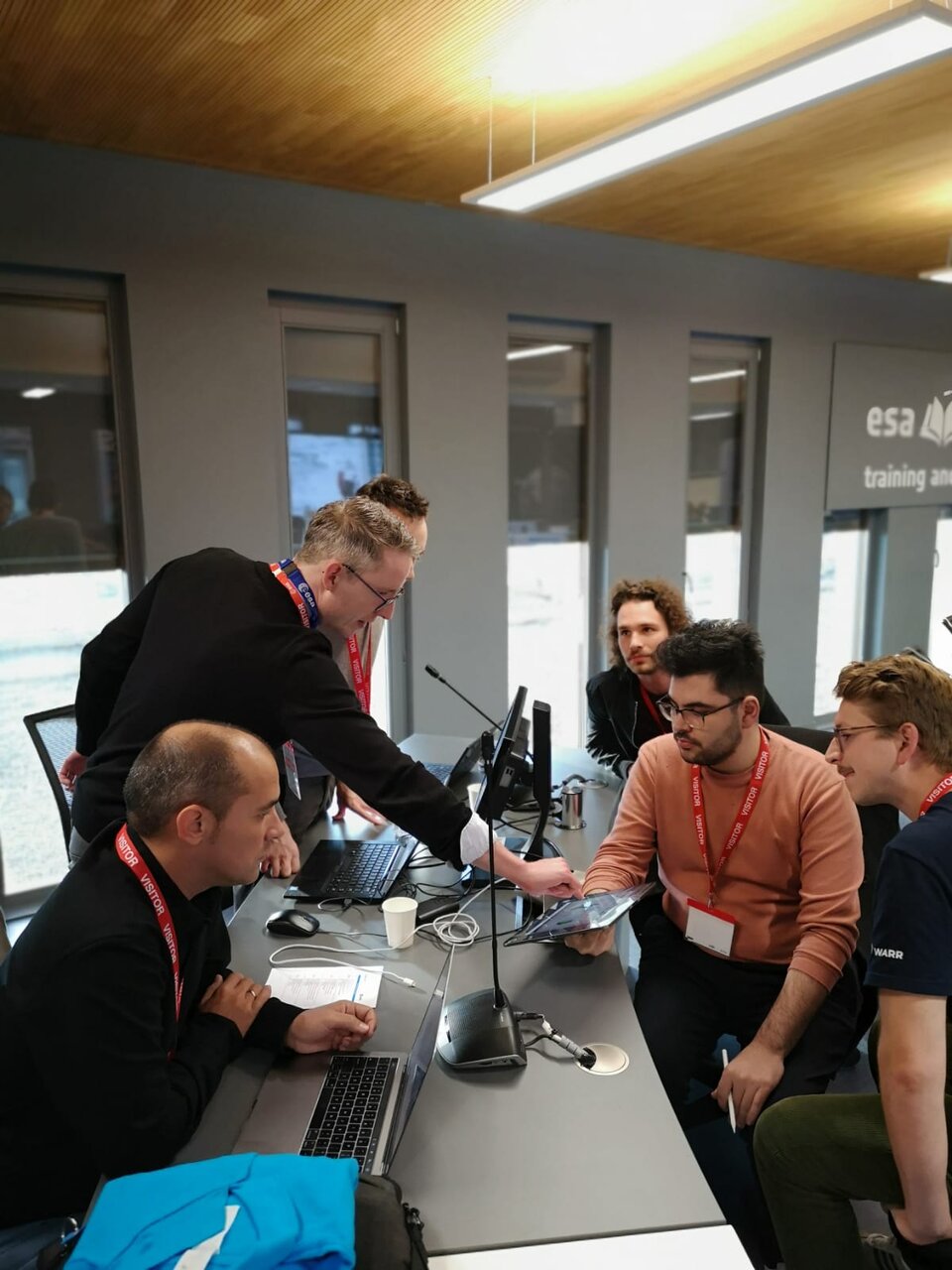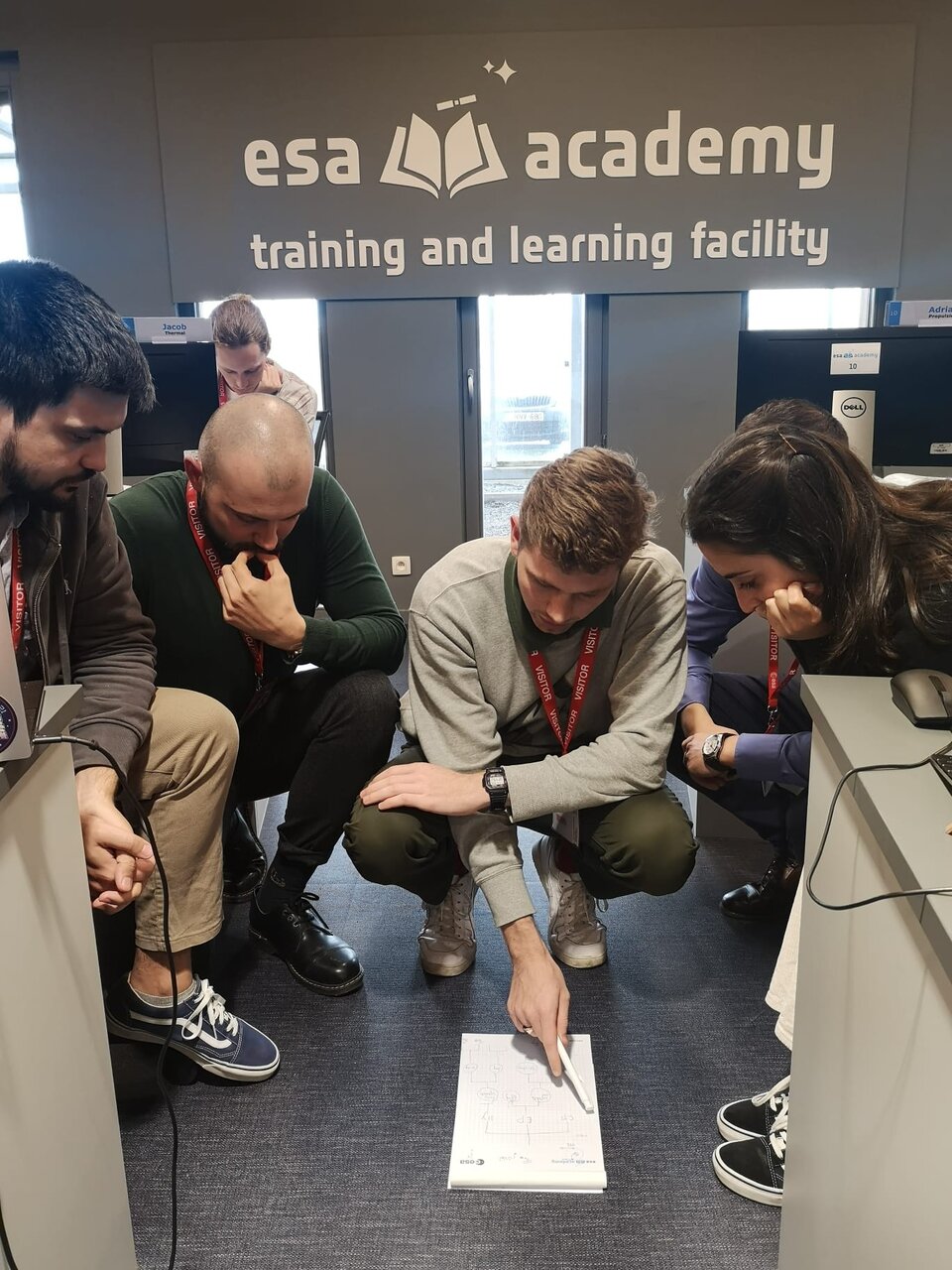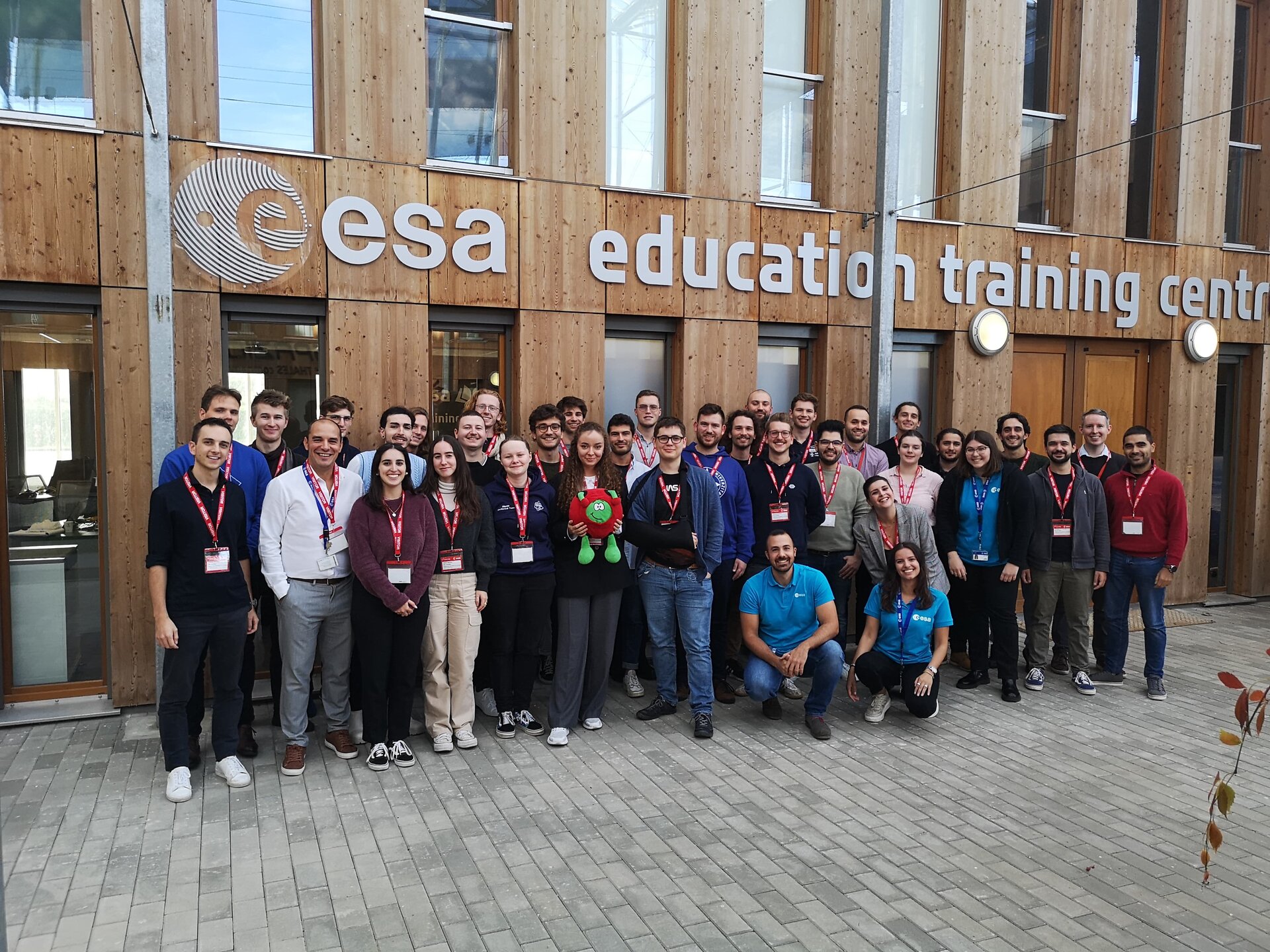Concurrent Engineering takes students to Venus!
In brief
30 university students from 13 different ESA Member States and Malta have attended ESA Academy’s Concurrent Engineering Workshop 2022. Held from 18 to 21 October 2022, the event took place at ESA Academy’s Training and Learning Facility, ESA-ESEC, Belgium -- which is also home to ESA’s educational Concurrent Design Facility (CDF). Providing tuition and technical expertise were two ESA Systems Engineers, supported by a National Trainee as a Systems Engineering Assistant, all from ESA’s Systems and Concurrent Engineering Section.
In-depth

The workshop aimed to familiarise students with the Concurrent Engineering approach and its many benefits for spacecraft design. Participants would also gain experience with the COncurrent Model-based dEsign Tool (COMET) used in ESA’s CDF.
On the first day, the students received their challenge: to use Concurrent Engineering to design a mission and send a floating platform and a spacecraft to Venus. Since Venus exhibits similar properties as Earth in size and density, it provides a natural laboratory for studying how habitability evolved in the Solar System. To make this ambitious task even more difficult, the mission – named LOVE (Large Orbiter Venus Explorer) by the students - had to be designed to handle the thermal challenges of Venus, while carrying the large floating platform and still fitting in the mass constraints of a single Ariane 6.2 launch. Could the students work together to complete their design in just four days?
A Spanish Master's student from the Technical University of Madrid (UPM) mentioned: “This workshop was an unforgettable experience that allowed me to really see how every design decision can have a great impact on the whole mission. Working concurrently has taken the design process to another level, and it has allowed me to bond with my colleagues and to learn more from them.”
The participants got to work right away, splitting into different teams to cover the vital aspects:
- Configuration
- Structures/Mechanisms
- Trajectory Analysis
- Propulsion
- Attitude and Orbit Control Subsystems (AOCS)
- Power
- Thermal
- Communications & Data Handling
- Optics & Sensors

The ESA Systems Engineers encouraged the students to create several iterations of their designs, each an improvement on the previous effort. Assessing the needs and functions of each team was an essential early step before proceeding to consolidate the overall design.
It did not take long before the scale of the task became apparent. Reaching another planet is hugely challenging, especially for such a complex mission that includes an orbiter and a floating platform. To tackle the volume and mass constraints while guaranteeing the scientific performance of the task, students had to consider many different trajectories and propulsion options. Furthermore, the thermal environment was proving challenging, particularly finding enough space for large radiators that did not see the Sun.
The students continued their refinements, carefully considering what needed extra attention before the second and final iteration. This allowed further improvements and fine-tuning of all the sub-systems, enhancing the design toward an ultimate convergence of all components.
An Italian Ph.D. student from Universidad Carlos III de Madrid (UC3M) mentioned the Concurrent Engineering Approach. “The understanding of the intrinsic coupling of the various disciplines involved in the design of a space mission is arguably one of the best takeaways from this ESA Academy workshop. The concurrent engineering design approach represents a powerful method for exploring those inter-dependencies rapidly and efficiently. The ESA Academy Concurrent Engineering Workshop puts you in front of the challenging problem of a space mission design, which forces you to collaborate with a multi-disciplinary team towards reaching the mission goals. This experience leads you to understand that the choices made on your subsystem inevitably impact the mission and the other subsystems and that a concurrent design approach is a great way of dealing with such complexity.”

To conclude the week, the students presented their results to ESA experts. They detailed their final design, explaining the trade-offs they had to perform to obtain the best results and proposing potential improvements and open tasks to still be performed. The experts were delighted with each team's overall design and results! The students then received their certificate of participation. This document and the workshop transcript will allow the participants to claim ECTS credit(s) from their university.
In addition to the workshop's core challenge, participants also had the chance to play the EcoDesign game, learning about the environmental impacts of a space mission and lifecycle assessments of a satellite. A visit to ESEC-Redu was also organised, which was greatly enjoyed by all.
To find more information about upcoming ESA Academy training opportunities, please check our website.
Contact: tlp@esa.int


